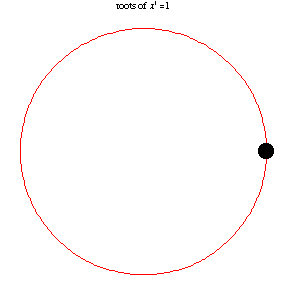Starting points and helper functions for learning digital signal processing.
If you haven't already, install Python 3.5 or greater, and the dspftw package.
python3 -m pip install dspftw --userSuperposition: The foundation of DSP
Prefer to use the complex exponential form instead of real, as it's a more natural fit for fourier analysis and synthesis.
The following functions represent a complex sinusoid. They are equivalent, and take the same parameters:
- A = Amplitude (y axis is amplitude).
- f = Frequency (cycles per second) in Hertz. It is multiplied by 2π to get radians per second.
- t = Time in seconds. These functions work in the time domain (x axis is time).
- ϕ = Phase offset at t=0, in radians.
z(t) = A*exp(j*(2π*f*t+ϕ))
z(t) = A*cos(2π*f*t+ϕ)+j*A*sin(2π*f*t+ϕ)
We can define this in Python with the following.
import numpy as np
# Here we use the name "complex_sinusoid" instead of just "z".
def complex_sinusoid(A, f, t, phi): return A * np.exp(1j*(2*np.pi*f*t+phi))In fact, this is defined in the dspftw package, so let's import that.
import dspftwWe can create our own sinusoid by defining everything except t.
def my_sinusoid(t): return dspftw.complex_sinusoid(A=5, f=5, t=t, phi=0)We can get the signal at a bunch of times thanks to numpy arrays. We use numpy.linspace to generate the evenly spaced times.
import numpy as np
times = np.linspace(0, 1, num=25) # 25 evenly spaced values between 0 and 1
my_signal = my_sinusoid(times) # returns an array of complex values representing the signalNow plot it out with dspftw.plot_complex(), which uses matplotlib.
import matplotlib.pyplot as plt
dspftw.plot_complex(my_signal)
plt.show()import numpy as np
signal = np.fromfile('filename', dtype='b') # load the whole file
signal = np.fromfile('filename', dtype='b', count=1024) # only load the first 1024 bytes of the file
signal = np.fromfile('filename', dtype='b', offset=1024) # skip the first 1024 bytes of the file
signal = np.fromfile('filename', dtype='b', offset=1024, count=1024) # skip 1024, then load 1024This just loads the values as an array of real numbers, but we want it as complex. We have to interpret every other value as the imaginary component.
signal = signal[0::2] + signal[1::2]*1jsignal = np.fromfile('filename', dtype='<f')count and offset work as above, but note that offset is in bytes, so you must multiple by 4 since there are 4 bytes in 32 bits.
signal = np.fromfile('filename', dtype='>f')count and offset work as above, but note that offset is in bytes, so you must multiple by 4 since there are 4 bytes in 32 bits.
